|
Books Should Be Free Loyal Books Free Public Domain Audiobooks & eBook Downloads |
|
|
Books Should Be Free Loyal Books Free Public Domain Audiobooks & eBook Downloads |
|
Top Authors |
|---|
|
Book type:
Sort by:
|
By: Arthur Pink (1886-1952) | |
|---|---|
 Sovereignty of God
Sovereignty of God
In the following pages an attempt has been made to examine anew in the light of God's Word some of the profoundest questions which can engage the human mind. | |
By: Arthur Poyser | |
|---|---|
 Tower Of London
Tower Of London
Description. History. “… those who read this book and have no opportunity of visiting the Tower expect that the characters in the moving drama of its history shall have some semblance of life as they walk across the stage…. My wish has been to persuade those who come to visit the Tower that there is a great deal to be seen in its immediate vicinity… A noble and historic building like the Tower resembles a venerable tree whose roots have spread into the soil in all directions, during the uncounted years of its existence, far beyond the position of its stem.” - Summary by Book Preface and David Wales | |
By: Arthur Ransome (1884-1967) | |
|---|---|
 Old Peter's Russian Tales
Old Peter's Russian Tales
Arthur Ransome is best known for his ‘Swallows and Amazons’ series of children’s books. This is the only example of his fiction in the public domain. These stories are all from Russian folklore, some comparatively well-known, others less so. Ransome spent some years in Russia as a newspaper correspondent fir the ‘Daily News’ and the ‘Manchester Guardian’ and was peripherally involved in the revolution. In the late twenties he married Evgenia Shvelpina, Trotsky’s secretary, retired from newspapers and started writing his children’s books. | |
 Russia in 1919
Russia in 1919
PUBLISHER'S NOTE: On August 27, 1914, in London, I made this note in a memorandum book: "Met Arthur Ransome at_____'s; discussed a book on the Russian's relation to the war in the light of psychological background--folklore." The book was not written but the idea that instinctively came to him pervades his every utterance on things Russian. The versatile man who commands more than respect as the biographer of Poe and Wilde; as the (translator of and commentator on Remy de Gourmont; as a folklorist, has shown himself to be consecrated to the truth... | |
By: Arthur Schopenhauer (1788-1860) | |
|---|---|
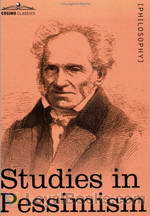 Studies in Pessimism
Studies in Pessimism
Arthur Schopenhauer, an early 19th century philosopher, made significant contributions to metaphysics, ethics, and aesthetics. His work also informed theories of evolution and psychology, largely through his theory of the will to power – a concept which Nietzsche famously adopted and developed. Despite this, he is today, as he was during his life, overshadowed by his contemporary, Hegel. Schopenhauer’s social/psychological views, put forth in this work and in others, are directly derived from his metaphysics, which was strongly influenced by Eastern thought... | |
 The Art of Controversy (or The Art of Being Right)
The Art of Controversy (or The Art of Being Right)
The Art of Controversy (or The Art of Being Right) (Die Kunst, Recht zu Behalten) is a short treatise written in 1831 by the German philosopher Arthur Schopenhauer in which he presents thirty-eight methods of gaining an unfair advantage in a debate and thereby being right even if you are wrong. Schopenhauer champions the virtue of dialectical argument, in his view wrongly neglected by philosophers in favour of logic, and goes on to discuss the distinction between our conscious intellectual powers and our will. The text is a favourite of debaters including the philosophers AC Grayling and Mary Warnock, and the Mayor of London Boris Johnson. | |
 World As Will and Idea, Vol. 1 of 3
World As Will and Idea, Vol. 1 of 3
In this work, Schopenhauer explains his fundamental idea that at the root of the reality we see around us is a Will that eternally, insatiably seeks to be satisfied. Each human Subject observes the Objects around her from the perspective of that fundamental Will working within each person. The human observer is distracted by the details of life and individual distinctions that obscure this Will; only by penetrating this “principium individuationis” (which is enslaved by the cause-and-effect tyranny of the Principle of Sufficient Reason) can the observer perceive the essential Thing-In-Itself... | |
 World as Will and Idea, Vol. 2 of 3
World as Will and Idea, Vol. 2 of 3
In this work, Schopenhauer explains his fundamental idea that at the root of the reality we see around us is a Will that eternally, insatiably seeks to be satisfied. Each human Subject observes the Objects around her from the perspective of that fundamental Will working within each person. The human observer is distracted by the details of life and individual distinctions that obscure this Will; only by penetrating this “principium individuationis” (which is enslaved by the cause-and-effect tyranny of the Principle of Sufficient Reason) can the observer perceive the essential Thing-In-Itself... | |
 World as Will and Idea, Vol. 3 of 3
World as Will and Idea, Vol. 3 of 3
In this work, Schopenhauer explains his fundamental idea that at the root of the reality we see around us is a Will that eternally, insatiably seeks to be satisfied. Each human Subject observes the Objects around her from the perspective of that fundamental Will working within each person. The human observer is distracted by the details of life and individual distinctions that obscure this Will; only by penetrating this “principium individuationis” (which is enslaved by the cause-and-effect tyranny of the Principle of Sufficient Reason) can the observer perceive the essential Thing-In-Itself... | |
 World as Will and Idea Volume 1
World as Will and Idea Volume 1
Schopenhauer used the word "will" as a human's most familiar designation for the concept that can also be signified by other words such as "desire," "striving," "wanting," "effort," and "urging." Schopenhauer's philosophy holds that all nature, including man, is the expression of an insatiable will to life. It is through the will that mankind finds all their suffering. Desire for more is what causes this suffering. He used the word representation (Vorstellung) to signify the mental idea or image of any object that is experienced as being external to the mind... | |
 Basis Of Morality
Basis Of Morality
In 1837, the Danish Royal Society of Sciences offered a prize to any essayist who could satisfactorily answer the question, "Is the fountain and basis of Morals to be sought for in an idea of morality which lies directly in the consciousness , and in the analysis of the other leading ethical conceptions which arise from it? Or is it to be found in some other source of knowledge?" The Basis of Morality is the essay submitted in 1840 by German philosopher Arthur Schopenhauer. In it, he first mercilessly... | |
By: Arthur Scott Bailey (1877-1949) | |
|---|---|
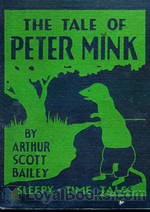 The Tale of Peter Mink
The Tale of Peter Mink
Arthur Scott Bailey (1877 – 1949) was author of more than forty children’s books. Bailey’s writing has been described thusly by the Newark Evening News: “Mr. Bailey centered all his plots in the animal, bird and insect worlds, weaving natural history into the stories in a way that won educator’s approval without arousing the suspicions of his young readers. He made it a habit to never ‘write down’ to children and frequently used words beyond the average juvenile vocabulary, believing that youngsters respond to the stimulus of the unfamiliar.” | |
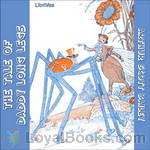 The Tale Of Daddy Long Legs
The Tale Of Daddy Long Legs
Summary text (Arthur Scott Bailey (1877 – 1949) was author of more than forty children’s books. He was born on November 15, 1877, in St. Albans, Vermont, United States, the second child of Winfield Scott Bailey and Harriet Sarah Goodhue. THERE was great excitement in the neighborhood of Farmer Green’s house. Rusty Wren had found some strange tracks. And nobody knew whose they were. Now, when they were puzzled like that the field- and forest-folk usually went straight to Mr. Crow for advice... | |
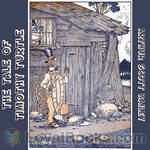 The Tale of Timothy Turtle
The Tale of Timothy Turtle
One of Bailey’s “Sleepy-Time Tales,” this is the story of Timothy Turtle, a grumpy old turtle trying to live his life alongside Black Creek. Timothy’s adventures lead him to encounters with other Black Creek creatures, Fatty Coon, Mr. Crow, Brownie Beaver, Peter Mink, Ferdinand Frog, and even the local boy, Johnnie Green. | |
 The Tale of Major Monkey
The Tale of Major Monkey
Arthur Scott Bailey was the author of more than forty children’s books.Mr. Bailey centered all his plots in the animal, bird and insect worlds, weaving natural history into the stories in a way that won educator’s approval without arousing the suspicions of his young readers. | |
 The Tale of Benny Badger
The Tale of Benny Badger
Mr. Bailey centered all his plots in the animal, bird and insect worlds, weaving natural history into the stories in a way that won educator’s approval without arousing the suspicions of his young readers. He made it a habit to never ‘write down’ to children and frequently used words beyond the average juvenile vocabulary, believing that youngsters respond to the stimulus of the unfamiliar.” | |
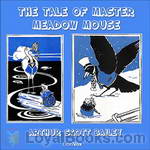 The Tale of Master Meadow Mouse
The Tale of Master Meadow Mouse
This volume in the series, Sleepy-Time Tales, follows the adventures of Master Meadow Mouse as he moves his home to various (safer) places, and tells how he cleverly avoids creatures such as Fatty Coon, Mr. Crow, and Mr. Great Blue Heron, just to name a few. | |
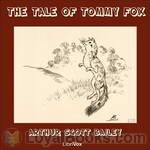 The Tale of Tommy Fox
The Tale of Tommy Fox
Bailey’s writing has been described thusly by the Newark Evening News: “Mr. Bailey centered all his plots in the animal, bird and insect worlds, weaving natural history into the stories in a way that won educator’s approval without arousing the suspicions of his young readers. He made it a habit to never ‘write down’ to children and frequently used words beyond the average juvenile vocabulary, believing that youngsters respond to the stimulus of the unfamiliar. (Wikipedia) | |
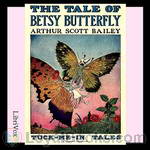 The Tale of Betsy Butterfly
The Tale of Betsy Butterfly
Arthur Scott Bailey (1877 – 1949) was the author of more than forty children’s books. “Mr. Bailey centered all his plots in the animal, bird and insect worlds, weaving natural history into the stories in a way that won educator’s approval without arousing the suspicions of his young readers. He made it a habit to never ‘write down’ to children and frequently used words beyond the average juvenile vocabulary, believing that youngsters respond to the stimulus of the unfamiliar.” (Wikipedia) | |
 The Tale of Grandfather Mole
The Tale of Grandfather Mole
Arthur Scott Bailey (1877 – 1949) was the author of more than forty children’s books.Bailey’s writing has been described thusly by the Newark Evening News: “Mr. Bailey centered all his plots in the animal, bird and insect worlds, weaving natural history into the stories in a way that won educator’s approval without arousing the suspicions of his young readers. He made it a habit to never ‘write down’ to children and frequently used words beyond the average juvenile vocabulary, believing that youngsters respond to the stimulus of the unfamiliar.” | |
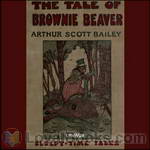 The Tale of Brownie Beaver
The Tale of Brownie Beaver
Arthur Scott Bailey was the author of more than forty children’s books, centered all his plots in the animal, bird and insect worlds, weaving natural history into the stories in a way that won educator’s approval without arousing the suspicions of his young readers. The Tale of Brownie Beaver is another adventure of the friends and neighbours of Pleasant Valley. You will hear how Brownie keeps a house safe from a Freshet and how he receives his weekly newspaper and not to forget the making of a new suit. | |
 Tale of Miss Kitty Cat
Tale of Miss Kitty Cat
The rats and the mice thought that Miss Kitty Cat was a terrible person. She was altogether too fond of hunting them. They agreed, however, that in one way it was pleasant to have her about the farmhouse. When she washed her face, while sitting on the doorsteps, they knew—so they said!—that it was going to rain. And then Mrs. Rat never would let her husband leave home without taking his umbrella. As a rule Miss Kitty Cat didn't look at all frightful. Almost always she appeared quite unruffled, going about her business in a quiet way and making no fuss over anything... | |
 Tale of Dickie Deer Mouse
Tale of Dickie Deer Mouse
"All the four-footed folk in the neighborhood agreed that Dickie Deer Mouse was well worth knowing. Throughout Pleasant Valley there was no one else so gentle as he . . . He was always tastefully dressed in fawn color and white. And except sometimes in the spring, when he needed a new coat, he was a real joy to see. For he both looked and acted like a well-bred little person."In one of Bailey's "Sleepy-Time Tales", we follow a polite little mouse called Dickie as he hunts for a summer home, finds food, and avoids various predators... | |
 Tale of Cuffy Bear
Tale of Cuffy Bear
A whimsical tale about the life of Cuffy bear on Blue Mountain. Cuffy is a very mischevious, disobedient bear who gets into all kinds of scrapes because he refuses to listen to his parents. He most always ends up in trouble or pain as a result of his mishaps. | |
 Tale of Buster Bumblebee
Tale of Buster Bumblebee
Buster Bumblebee and his family move into a new home. Excitement and buzzing abound. Buster meet a strange fellow called a carpenter bee, way too many chirpy crickets, and even finds his own long lost sister. Later in his adventurous life, Buster learns of another kind of Bee, a Raising Bee and how much food is available for everyone there. All in all, this tale will bring smiles and grins to listeners young and old as it tells of Buster Bumblebee, a young bee with a lot to learn but a heart of gold. | |
 Tale of Mrs. LadyBug
Tale of Mrs. LadyBug
Have you ever seen a LadyBug and wondered what the cute little bug with the dots on her back was thinking? And why she seemed in such a rush? Well here is your chance to peek into her thoughts and enjoy some of her daily triumphs and disasters. "Little Mrs. Ladybug was a worker. Nobody could deny that. To be sure, she had to stop now and then to talk to her neighbors, because Mrs. Ladybug dearly loved a bit of gossip. At the same time there wasn't anyone in Pleasant Valley that helped Farmer Green more than she did... | |
 Tale of Henrietta Hen
Tale of Henrietta Hen
The Tale of Henrietta Hen is a cute children's book filled with the adventures of a hen named Henrietta. | |
 Tale of Pony Twinkleheels
Tale of Pony Twinkleheels
"When Johnnie Green sent him along the road at a trot, Twinkleheels' tiny feet moved so fast that you could scarcely have told one from another. Being a pony, and only half as big as a horse, he had to move his legs twice as quickly as a horse did in order to travel at a horse's speed. Twinkleheels' friends knew that he didn't care to be beaten by any horse, no matter how long-legged. "It's spirit, not size, that counts," Farmer Green often remarked as he watched Twinkleheels tripping out of the yard, sometimes with Johnnie on his back, sometimes drawing Johnnie in a little, red-wheeled buggy... | |
 Tale of Freddie Firefly
Tale of Freddie Firefly
He was able to draw a deep breath again as they reached the field of red clover, where Peppery Polly Bumblebee settled quickly upon a clover-top and began sucking up the sweet nectar with her long tongue. For some time she worked busily without saying a word. And indeed, how could she have spoken with her tongue buried deep in the heart of a clover blossom? (From The Tale of Freddy Firefly) | |
 Tale of Turkey Proudfoot (version 2)
Tale of Turkey Proudfoot (version 2)
Another Slumbertown and Tuck-Me In Tale book by Arthur Scott Bailey, this time we meet Turkey Proudfoot at Farmer Greens farm in Pleasant Valley and his fellow yard mates who loved to mimic his beautiful tail. - Summary by Lynda Marie Neilson | |
 Tale of Paddy Muskrat
Tale of Paddy Muskrat
Enter Pleasant Valley, the home of the interesting and entertaining creatures and adventures born of American author Arthur Scott Bailey. The Tale of Paddy Muskrat is one of many works penned by Bailey that are part of his Sleep-Time Tales set intended for young children. Come enjoy the turns of luck and whims of the laziest member of the valley. - Summary by Bill Turns Prooflisteners: KevinS and MaryinArkansas | |
 Tale of Miss Kitty Cat (Version 2)
Tale of Miss Kitty Cat (Version 2)
MIss Kitty Cat lives on a farm with the human family that she has adopted. Little Johnny Green is her favorite even though sometimes he plays trickson Miss Kitty. The many other animals, from the dog to the little mice all have adventures with with her but she always finds time to do what a cat is best at; taking a nap. Join in reading a delightful chapter of this book; they are all fairly short and fun to do. - Summary by phil chenevert | |